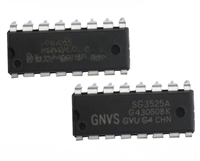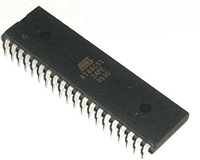| 是否无铅: | 含铅 | 是否Rohs认证: | 符合 |
| 生命周期: | Obsolete | 零件包装代码: | QFN |
| 包装说明: | 4 X 4 MM, ROHS COMPLIANT, MO220VGGD-2, LFCSP-24 | 针数: | 24 |
| Reach Compliance Code: | compliant | ECCN代码: | EAR99 |
| HTS代码: | 8542.39.00.01 | 风险等级: | 5.13 |
| Samacsys Confidence: | Samacsys Status: | Released | |
| Schematic Symbol: | https://componentsearchengine.com/symbol.php?partID=579200 | PCB Footprint: | https://componentsearchengine.com/footprint.php?partID=579200 |
| Samacsys PartID: | 579200 | Samacsys Image: | https://componentsearchengine.com/Images/9/ADN2872ACPZ-RL.jpg |
| Samacsys Thumbnail Image: | https://componentsearchengine.com/Thumbnails/1/ADN2872ACPZ-RL.jpg | Samacsys Pin Count: | 25 |
| Samacsys Part Category: | Integrated Circuit | Samacsys Package Category: | Other |
| Samacsys Footprint Name: | QFN50P400X400X100-25N | Samacsys Released Date: | 2017-01-11 11:21:59 |
| Is Samacsys: | N | 接口集成电路类型: | INTERFACE CIRCUIT |
| JESD-30 代码: | S-XQCC-N24 | JESD-609代码: | e3 |
| 长度: | 4 mm | 湿度敏感等级: | 1 |
| 功能数量: | 1 | 端子数量: | 24 |
| 最高工作温度: | 85 °C | 最低工作温度: | -40 °C |
| 封装主体材料: | UNSPECIFIED | 封装代码: | HVQCCN |
| 封装等效代码: | LCC24,.16SQ,20 | 封装形状: | SQUARE |
| 封装形式: | CHIP CARRIER, HEAT SINK/SLUG, VERY THIN PROFILE | 峰值回流温度(摄氏度): | 225 |
| 电源: | 3.3 V | 认证状态: | Not Qualified |
| 座面最大高度: | 1 mm | 子类别: | Display Drivers |
| 最大供电电压: | 3.6 V | 最小供电电压: | 3 V |
| 标称供电电压: | 3.3 V | 表面贴装: | YES |
| 温度等级: | INDUSTRIAL | 端子面层: | MATTE TIN |
| 端子形式: | NO LEAD | 端子节距: | 0.5 mm |
| 端子位置: | QUAD | 处于峰值回流温度下的最长时间: | NOT SPECIFIED |
| 宽度: | 4 mm | Base Number Matches: | 1 |
| 型号 | 品牌 | 描述 | 获取价格 | 数据表 |
| ADN2873 | ADI | 3.3 V, 50 Mbps to 4.25 Gbps, Single-Loop, Laser Diode Driver |
获取价格 |

|
| ADN2873ACPZ | ADI | 3.3 V, 50 Mbps to 4.25 Gbps, Single-Loop, Laser Diode Driver |
获取价格 |

|
| ADN2873ACPZ-RL | ADI | 3.3 V, 50 Mbps to 4.25 Gbps, Single-Loop, Laser Diode Driver |
获取价格 |

|
| ADN2873ACPZ-RL7 | ADI | 3.3 V, 50 Mbps to 4.25 Gbps, Single-Loop, Laser Diode Driver |
获取价格 |

|
| ADN2880 | ADI | 3.2 Gbps, 3.3 V, Low Noise, Transimpedance Amplifier |
获取价格 |

|
| ADN2880ACHIPS | ADI | 3.2 Gbps, 3.3 V, Low Noise, Transimpedance Amplifier |
获取价格 |

|
 SG3525资料手册详解:SG3525参数分析、引脚说明、应用介绍
SG3525资料手册详解:SG3525参数分析、引脚说明、应用介绍

 AT89C51单片机资料手册详细解析及应用示例
AT89C51单片机资料手册详细解析及应用示例

 CP2102资料手册解读:CP2102引脚说明、关键参数分析
CP2102资料手册解读:CP2102引脚说明、关键参数分析

 资料手册解读:UC3842参数和管脚说明
资料手册解读:UC3842参数和管脚说明
